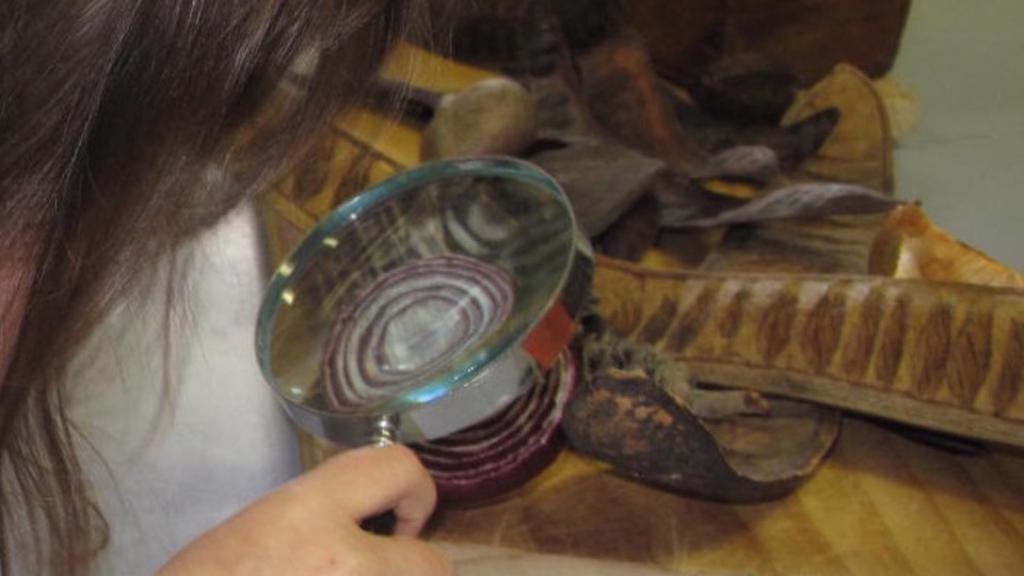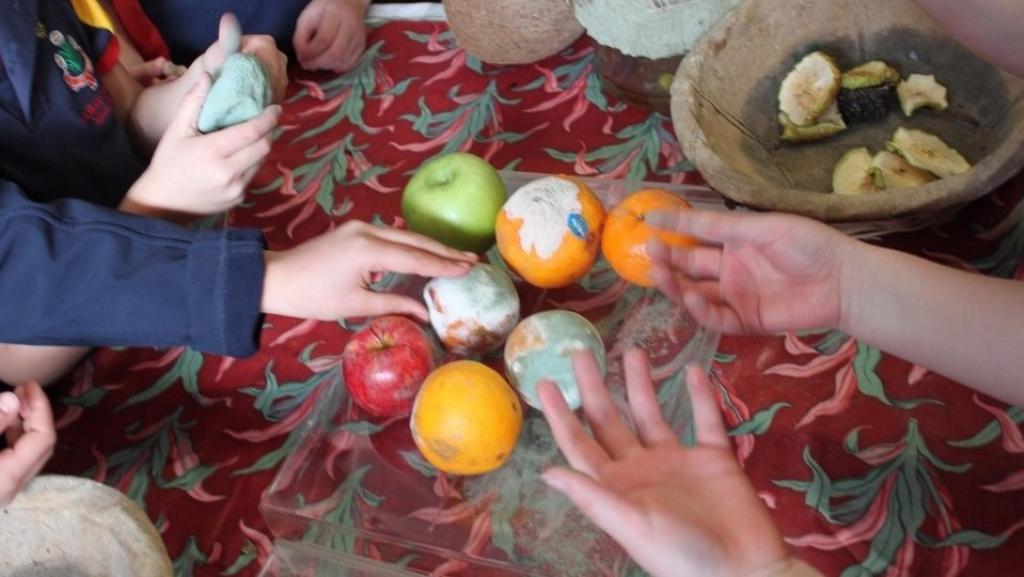Plants are a life-sustaining resource
Grade 1 classroom case study: Biology, systems and responsibility
Teachers: Kate Bird and Anna Melville
School description: Toorak College is an independent inter-denominational school, covering kindergarten to Year 12, located forty kilometres south of Melbourne. The learning program in the Junior and Preschool reflects the International Baccalaureate (IB) Primary Years Program (PYP) and the Reggio Emilia philosophy. Toorak College is a co-educational ELC and Junior school (kindergarten to Year 6) is an IB World School and is authorised to offer the IB Primary Years Program (PYP).
Curriculum objectives
The transdisciplinary theme, ‘Sharing the planet’, and the central idea, ‘Plants are a life sustaining resource’, made up a seven-week unit in Term 3 for Year 1 (seven-year-olds).
Key concepts: responsibility and function. Related concepts: growth, classification and systems. We tackled the concepts of responsibility and function while learning about:
- Taking responsibility to care for plants as they grow
- Changes that occur through plant growth
- Purposes and uses of the parts of a plant
- The system of photosynthesis
- Traditional uses of plants
We used an Information Report as the text for this unit. The unit concluded with a summative assessment task – the production and sharing of ‘My Broad Bean Seed Diary’.
Each child germinated a broad bean as a classroom-based research project. They observed, collected data and recorded the progress of their seeds growing into plants and compared their data with their peers.
Teaching and learning process
See, think, wonder was used as an entry point for exploration and discussion in this topic. Year 1 students explored a variety of plants: tomato, celery, carrot and onion. They investigated each from various perspectives, viewing cross-sections and sketching their findings. Their carefully considered observations were recorded to allow them to investigate further.
Finding out: The children walked in the school’s gardens (conventional and Indigenous), and considered such questions as:
- What are the parts of plants we can use?
- How did Indigenous peoples use plants?
Sorting out: In this process the students took responsibility to care for the plants. Together they shared their knowledge and asked:
- How can we care for plants as they grow?
- How should we treat the knowledge that other cultures share with us about how to care for plants?
Function: We worked to expand the students’ vocabulary for plants and create a word bank. Using non-fiction texts, we explored how pictures and words work together to give us information. Students worked with a buddy to research and create an information text on an Indigenous tree. We considered these questions:
- How does the root and leaf system work?
- Which parts of the plants are life-sustaining?
Students sketched plants and then created label diagrams to explain the process of photosynthesis. Students experimented with making dyes from beetroot leaves and root and flower petals. Students made root vegetable soup, read The Little Red Hen and made bread.
Following the children’s interest: We allowed mould to occur in our classrooms and a wondering question resulted: ‘Why did you paint the orange green?’
This question opened an unforeseen area of inquiry, as it revealed that the children did not know what mould was – nor did they recognise the cycle of decay and its role in nature. We decided to immerse in the story of mould by watching a time-lapse film showing the decay process. The children observed a watermelon decaying over the month.
Outcomes of this unit
By participating in this unit, the children:
- Developed note-taking skills in a process that focused on listening and recording key words. This provided them with an abundance of raw material to write in their own words when they produced their Information Book of Plants.
- Experienced caring for the seedlings, which was a personal and very exciting task. Using their learning they predicted what would happen to the seedlings after the weekend.
- Enjoyed measuring the growth of the roots and the plant. It was especially challenging working out how to measure roots that were curled and horizontal.
- Learned how to draw a labelled diagram (headings: colour, size and number) as an observational technique. This activity was undertaken once a week and it really developed the children’s confidence in sketching.
- Curated a ‘word bank’ in their journals, which gave them a great reference point to gather and use expert words in their Book of Plants. We noticed a significant increase in complexity of language used to describe plants and the biology.
- Experimented with drying different vegetables and fruits using a dehydrator, and were thus able to observe various stages of transformation.
- Were engaged, keen to explore, record and sketch their findings and observations – the five senses were fired up and the scientific method was ignited.
- Gained a deep interest in this topic – individual students have continued to bring plant-based conversations and learning from their homes back into the classroom. In one case, a parent offered to come into the classroom to share his recipe for kale chips.
Reflections
What we would do differently next time?
We would not grow the seeds in a CD case – while the casing provided transparency, the seeds dried out too quickly. We would use a clear plastic cup next time. One classroom was very hot, which meant the plants dried out too easily and did not flourish. While a useful learning, this was not helpful for student observations.
In other years we made posters that gave a lot of emphasis to the labelling and presenting. The information books were effective this year, as we did not have as much time. Next time we would make the scientific process more explicit and start with a hypothesis.
What was very effective?
The rich classroom environment was a wonderful catalyst for student questions and discussions. The children were very excited about planting and growing the plants and were fascinated with mould. The link from this unit to our cooking program was a natural extension made by the students.
Our focus on the process of gathering and recording the information was very effective. In Art classes, our focus on the work of Margaret Preston, and the children’s use of water-soluble pencils on their plant drawings, enabled beautiful mixing and blending.
What are your next steps (if any) as a result of your project?
The broad beans will be planted and the children will continue to care for them. Once the beans are harvested the children will make a broad bean dip.
Resources
Online:
Making thinking visible: www.ronritchhart.com
Brainpop science resources: https://jr.brainpop.com (search: Plant Life Cycle)
Books:
Five Beans Big Book (germinating seeds) – Nigel Croser
Collecting Colour – Kylie Dunstan
The Lorax – Dr Seuss
Poetree – Douglas Florian
The Little Red Hen
Where the forest meets the sea – Jeanne Baker
Props:
CD cases, broad beans, baskets of seedpods, fruit and vegetables, mouldy fruit, plastic sheet for the children to write their observations on.
Australian curriculum and/or state frameworks
Biological sciences Living things have a variety of external features (ACSSU017)
Nature and development of science Science involves asking questions about, and describing changes in, objects and events (ACSHE021)
Communicating Represent and communicate observations and ideas in a variety of ways such as oral and written language, drawing and role-play (ACSIS029)
Interacting with others Engage in conversations and discussions, using active listening behaviours, showing interest, and contributing ideas, information and questions (ACELY1656)
Organising ideas
O1. 2. Aboriginal and Torres Strait Islander communities maintain a special connection to and responsibility for Country/Place throughout all of Australia.
OI. 1 The biosphere is a dynamic system providing conditions that sustain life on Earth.
OI. 7 Actions for a more sustainable future reflect values of care, respect and responsibility, and require us to explore and understand environments.


